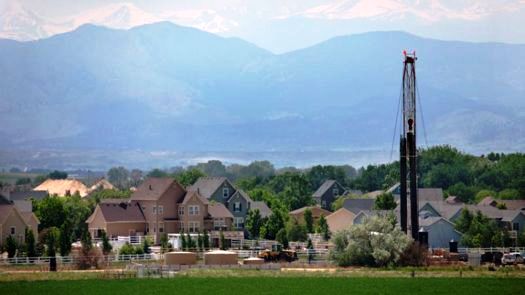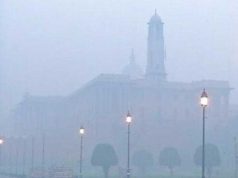San Francisco – A growing body of evidence shows that people both near and far from oil and gas drilling are exposed to fracking-related air pollution that can cause at least five major types of health impacts, according to a new comprehensive analysis of scientific studies to-date by the Natural Resources Defense Council (NRDC).
The health impacts include respiratory problems, birth defects, blood disorders, cancer and nervous system impacts, raising serious concerns for workers and people living closest to wells, as well as entire regions with high volumes of oil and gas activity.

“The health risks from fracking are not limited to what’s in our drinking water – oil and gas operations are also poisoning the air we breathe,” said NRDC Senior Scientist Miriam Rotkin-Ellman. “While industry continues to try to sweep the impacts of fracking under a rug, the science keeps revealing serious health threats – for workers, families living nearby, and entire regions with heavy oil and gas activity.”
“Fracking Fumes: Air Pollution from Hydraulic Fracturing Threatens Public Health and Communities” provides the most comprehensive analysis of available science to-date on toxic air pollution from oil and gas development. It identifies an emerging pattern in the science revealing unsafe levels of air pollution near fracking sites around the country. More research is needed to better understand a wide range of other threats that have emerged.
The report breaks down the health impacts that scientists have identified on the local, regional and global scales. It shows that health threats from air pollution are not limited to communities with drilling directly in their backyards. Rather, entire regions with high levels of oil and gas activity are paying the price with smog-filled skies and respiratory problems.
This infographic illustrates the geographic scale of the health impacts: http://bit.ly/1zhkCpH
An overview follows:
- Global Impacts: In addition to carbon pollution, fracking operations emit massive amounts of methane pollution, which drive global climate change. Methane warms the climate at least 80 times more than an equal amount of carbon dioxide over a 20-year period.
- Regional Impacts: Nitrogen oxides and volatile organic compounds (VOCs) form ground-level ozone. In communities where there is a lot of drilling, this can cause respiratory and cardiovascular effects on a regional scale, even for those who don’t live in close proximity to wells. Impacts include coughs, shortness of breath, airway and lung inflammation, decreased lung function, worsening of asthma and other respiratory diseases, cardiac arrhythmia, increased risk of heart disease, heart attacks, stroke, increased hospital admissions and premature mortality.
- Local Impacts: Those living or working closest to wells are at the highest risk. In addition to the aforementioned health threats, they can also be exposed to diesel particulate matter and other toxics, including carcinogens. As a result, they are also at risk for eye, nose and throat irritation, brain and nervous system problems including headaches, light-headedness and disorientation, blood and bone marrow damage leading to anaemia and immunological problems, reproductive system effects, birth defects and harm to the developing foetus, and cancer.
Of these impacts, there is the greatest amount of evidence raising concern about risks for the following health impacts:
- Respiratory Problems: Impacts can include asthma attacks, shortness of breath, difficulty in breathing and lung disease. Levels of pollutants high enough to cause respiratory problems, particularly for vulnerable populations such as children, have been found both close to fracking sites and in regions with intense oil and gas activity. Workers have been found to be at risk of permanent lung damage caused by exposure to silica fracking sand.
- Nervous System Impacts: Exposure to these pollutants, such as VOCs and hydrogen sulphide, can cause neurological problems ranging from dizziness and headaches to seizures and loss of consciousness. Multiple studies have measured benzene levels close to fracking sites that are higher than the thresholds set to protect people from these impacts.


















